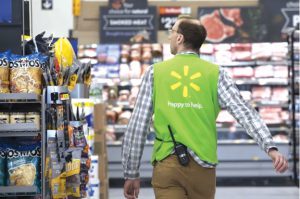Bloomberg
US employers added a healthy number of jobs in August and a steady stream of people entering the workforce lifted the unemployment rate, suggesting some easing in the tight labor market and offering mixed implications for the Federal Reserve.
Nonfarm payrolls increased 315,000 last month following a revised 526,000 advance in July, a Labor Department report showed. The unemployment rate unexpectedly rose to a six-month high of 3.7%, the first increase since January, as the participation rate climbed.
Economists projected an almost 300,000 gain in payrolls and a 3.5% jobless rate, based on the median estimates in a Bloomberg survey.
Despite moderating job growth, the still-solid employment gain points to a healthy appetite for labour amid high inflation, rising interest rates and an uncertain economic outlook. Such demand, along with repeated pay raises, continues to underpin consumer spending.
However, the jump in participation, which could lead to a further cooling in monthly wage growth, added to signs that inflation pressures are slowing. That’s welcome news for the Fed as it debates its next rate decision, and led traders to pare bets for a third-straight 75-basis-point hike after the report. It also puts more focus on consumer price data due ahead of the September policy meeting.
“This is really what the Fed is hoping for,†former Fed governor and University of Chicago professor Randall Kroszner said on Bloomberg TV. “More people are coming back into the labor market. That helps to reduce the
tightness of that market.â€
The labour force participation rate — the share of the population that is working or looking for work — advanced to 62.4%, matching the highest since March 2020. The rate for workers ages 25-54 rose by the most since June 2020 to 82.8%. Teen participation also surged.
“Most of the new labour force entrants found work, particularly part-time, while the remainder of these new entrants are still searching,†Mizuho Financial Group Inc. economists Alex Pelle and Steven Ricchiuto said in a note. The number of people working part-time for economic reasons jumped for a second month.
The job gains were led by professional and business services, health care and retail trade. Leisure and hospitality posted the smallest payrolls gain since a decline in December 2020.
While a persistent mismatch between labour supply and demand has driven businesses to bid up wages, the report shows some encouraging signs that the two are coming more in line. Average hourly earnings rose 0.3% from the prior month and were up 5.2% from a year earlier.
Fed Chair Jerome Powell emphasised the “out of balance†nature of the labour market in a speech last week while also acknowledging that the combination of higher rates, slower growth and a softer labour market will “bring some pain†to households and businesses.
The report is also likely to be welcomed by President Joe Biden and his advisers as they struggle to craft a positive economic message amid hot inflation ahead of the midterm elections, where they are defending thin congressional majorities.
 The Gulf Time Newspaper One of the finest business newspapers in the UAE brought to you by our professional writers and editors.
The Gulf Time Newspaper One of the finest business newspapers in the UAE brought to you by our professional writers and editors.
